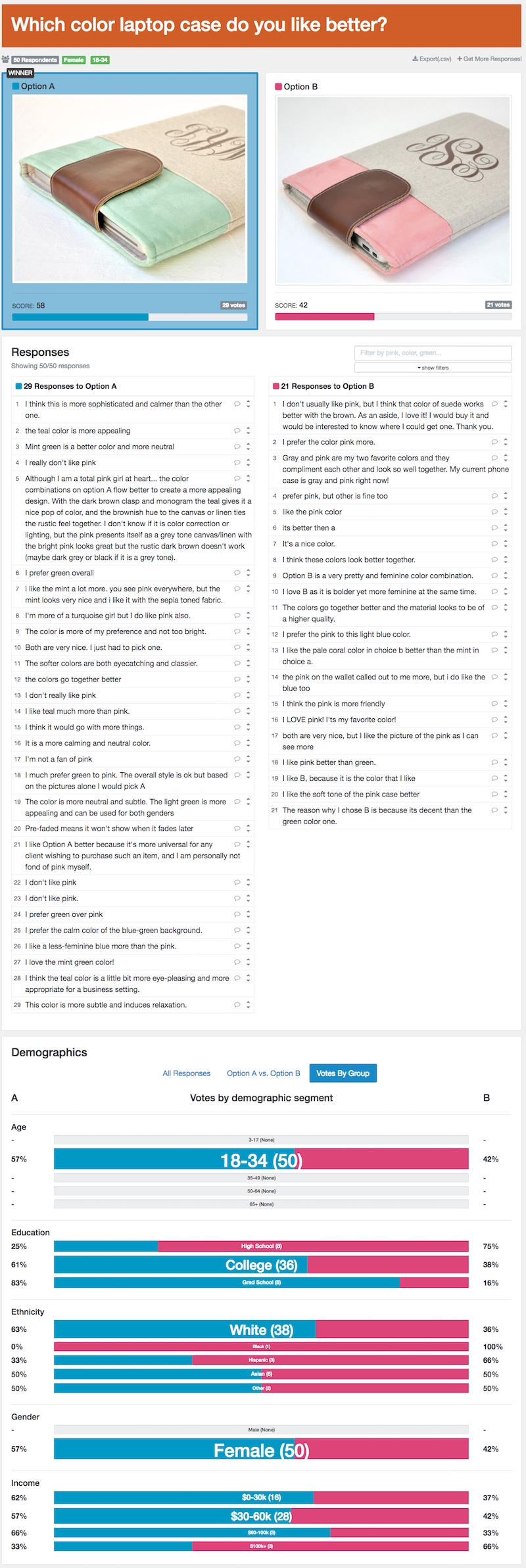Chris Gronkowski runs Everything Decorated, an online shop for personalized gifts. “Choosing inventory to offer is the hard part,” he says. “We are a small family-owned business, so we have to make the right choices with inventory and colors or it really affects our cash flow and also our storage space. We have our own manufacturers for almost all of our products, and lead times are usually 3-4 months, so we have to be on top of our ordering or we will be stuck without product for months at a time.”
This dilemma is a familiar one in the e-commerce space. So what’s a store owner to do?
Read these tips from successful business owners on choosing inventory that sells.
Keyword research is essential when choosing inventory
Perhaps more than any other type of business, e-commerce stores understand the importance of keyword research on Google, Etsy, Amazon, and other online channels.
Adam Watson, managing director of UK-based Hollywood Mirrors and Decoralo, describes his keyword research process this way: “The first thing I do is reverse engineer what my customers are searching using Google Keyword Planner for several phrases that relate to the item or its brand and product name. Ideally, you want this [keyword phrase] to be searched over 100 times a month and have a low CPC.” He judges a low estimated CPC as around 1% of your gross profit margin. “Once the product is well searched for and has a low CPC, I then look at its keyword difficulty score to see if my store can rank naturally in Google organic search results. For this, I use Ahrefs keyword difficulty tool. Ideally, you’re looking for a score below 4 or 5.”
Watson also recommends visiting competitor websites and filtering their products by best sellers. Try typing “best seller” in the search bar. “A cool trick,” he says, “is if it is a Shopify store, you can enter this string: /collections/all?sort_by=best-selling to rank which products sell best. This takes a lot of the hard work out, as your competitor has done it for you.”
Research product trends and competition
Paula Welsh runs the accessories store 7 Charming Sisters. When choosing inventory, she says, “My first step in the collection curation process starts with researching jewelry trends for the season the collection will be released. I look heavily at jewelry and accessory trends seen on each of the major fashion runways for the season and compile a lookbook of images organized by theme; some of the common trends I’ve identified in recent seasons include florals, geometric, pom poms, tortoiseshell, and my personal favorite, mismatched earrings. Seeing what accessories clothing designers are pairing their designs with allows me to anticipate what customers will be looking for when they shop.”
Refer to Pantone when choosing inventory colors
When choosing inventory colors, consider the Pantone Color of the Year. This influential color is the year’s “it” color for everything from fashion and graphic design to home décor and wedding color schemes. When she chooses items for her jewelry store, Welsh says, “I actually tend to put more of an emphasis on finding jewelry in colors that coordinate with the Pantone color and not match it identically – clothing is typically represented in the color of the year, and you want your jewelry to compliment it and pop, not be matchy-matchy.”
Dip your toe in the water before taking the plunge
Most e-commerce stores will purchase a small test quantity of products before ordering large numbers of inventory. Try these creative ways of gauging interest in your test products:
Jean Grant, Senior Purchasing Manager at Find Me a Gift says, “we host regular giveaways on social media of potential products, and use the number of competition entries as an indicator of whether the product will sell or not.”
Thomas Adams runs Thrive Tactical Gear and recommends Jungle Scout for product research. Once he buys a product sample, he says, “I set up a listing in Facebook Marketplace, and see how many people want to buy the product. This is how I discovered that there was a demand for ankle holsters.”
Keep doing what works
“When expanding our inventory, we firstly focus on expanding our more popular product ranges,” says Grant. “If we already know a product sells well, there’s a good chance this new product will too.” For example, Find Me A Gift found success with personalized posters, so it extended the range to include mugs, cushions, and lightboxes. “We knew that our poster designs were popular with our customers, so we had reason to believe that the same design would be popular on homewares, too.”
However, she notes, “I would also recommend not getting too caught up in trying to add complete product ranges to your inventory. It is much better and efficient to be quick to market with two products, than waiting longer for six products and missing the peak interest period.”
Try new angles
Gronkowski notes that if a product does not sell in his online store, “we will try and market [that product] towards a different market before ruling it out. For example, we might market a robe towards a bachelorette party gift, but if that doesn’t work, then we might try to market it towards a women’s birthday gift instead.”
Additionally, while Welsh methodically makes jewelry selections using the tips above, she says, “I always include some unexpected surprises into a collection.” Don’t be afraid to take some risks!
Use PickFu to help you with choosing inventory
Gauge customer interest in products by running a PickFu poll. Test color combinations, product variations, and featured product photos to see what respondents like best. You can even target poll respondents to match your store’s core audience.
Here’s an example – this PickFu pollster wanted to know which color for a laptop case might fare better with his buyers. He targeted females between the age of 18 and 34 to solicit their advice. For just a few dollars and in just a few minutes, he saw these results with PickFu:
Ready to try it for yourself? Start polling potential customers about inventory now!




